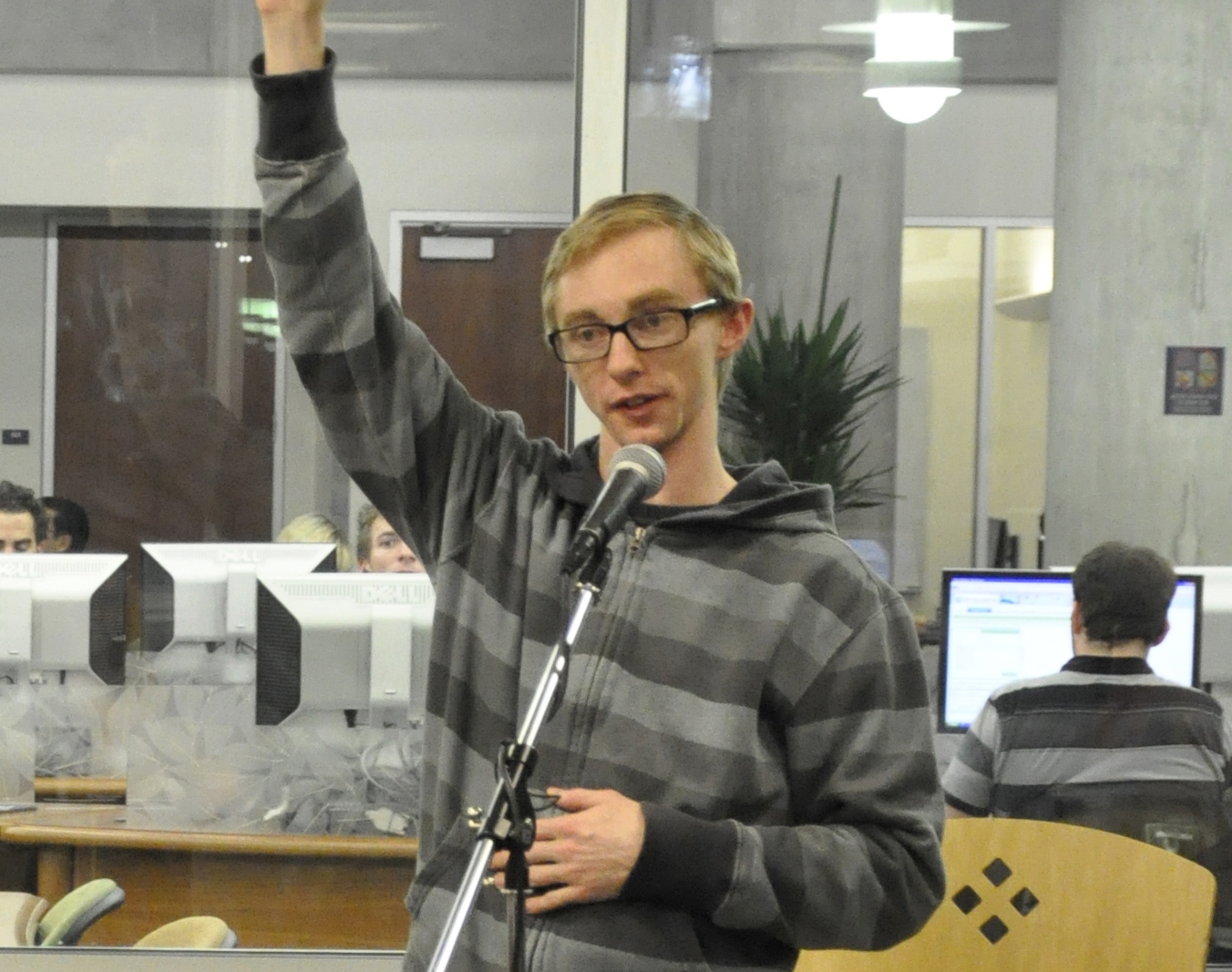Green fee goes to vote
Sustainability council has proposed students pay a fee – 25 cents per credit hour – to be voted upon in the 2011 ASUSU elections. The fee’s purpose is to “save dollars and enrich personal health, the health of others, as well as the natural environment,” according to the submitted fee proposal.
“The disadvantages of this are low. I mean, it’s three dollars for full-time students,” said John Rentschler, a sustainability council member who originally initiated the fee proposal. “We are not trying to make people change, but think maybe we can influence them to change some habits over time.”
If passed, the fee would take effect Fall 2011 and would not be implemented during summer semester. The fee will be continuous until its five-year evaluation, and the number of credit hours with which the fee will be attached will plateau at 12 credits.
“The fee is both ideal and the last resort,” said Jacob Buckner, student sustainability council director. “We tried all the other options because we didn’t want to ask for a student fee if we didn’t need it. We explored other things including Tier II tuition and weren’t able to get funding from any other source.”
He said the reason why the student fee is ideal is because students will be relied on more to head sustainability initiatives and projects.
The fund cultivated from the Blue Goes Green fee would be similar to the Academic Opportunity fund, which is grant-driven. When a student crafts a project that empowers sustainability on USU’s campus and the idea is approved, they can be granted money from the Blue Goes Green fund to fuel the project, Rentschler said.
He said this allows the students to “cut the red tape” and the money will never be “hidden in a dark corner.”
Blue Goes Green funding could also go toward work study jobs on campus as well as AmeriCorps internships, Vista internships and credit-based internships for students who are active in sustainability on and off campus.
“We see food composting, a stronger recycling program, and other projects that need to be attended to sooner than later,” said Brad Armstrong, sustainability council co-coordinator. “We have the ability to accomplish our goals now. The future is always uncertain and time is important.”
With the current student demographic, the most difficult thing to do is ask them to look into the future and help them see where the world is headed if conservation is not made an imperative part of one’s daily routine.
Armstrong said from what he has observed, the majority of students see the fee as a step in the right direction.
“Generally people are well-intentioned and slightly apathetic,” Buckner said. “A lot of people believe this is a good, necessary fee, but don’t put effort into (sustainability).”
Buckner said students mainly lack knowledge and motivation when it comes to living sustainably. He said with the fee, he envisions USU will become a leader in Utah universities’ sustainable living movements, and will become a school other universities can model their conservation programs after. USU’s student sustainability council researched many other universities’ sustainability programs, and received many of their organizational and structural ideas from the University of Utah and other west coast schools, Buckner said.
“If the fee doesn’t pass, we will push even harder and begin our campaign even sooner with more education and more publicity,” Armstrong said.
In order to vote for or against the implementation of the Blue Goes Green student fee, students can login into www.usu.edu/asusu using their “A” number and password. Voting will be open beginning Feb. 22 at 7 a.m.
– catherine.meidell@aggiemail.usu.edu

